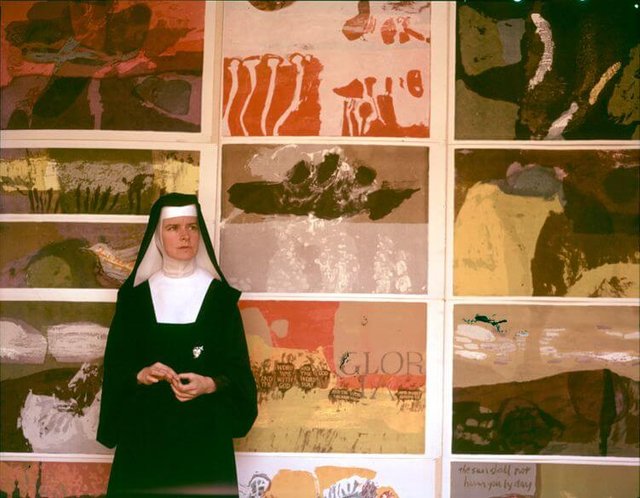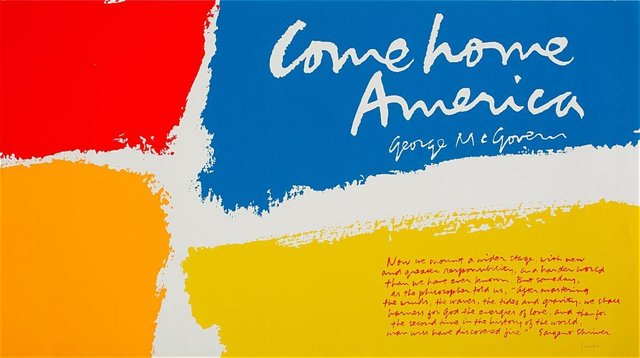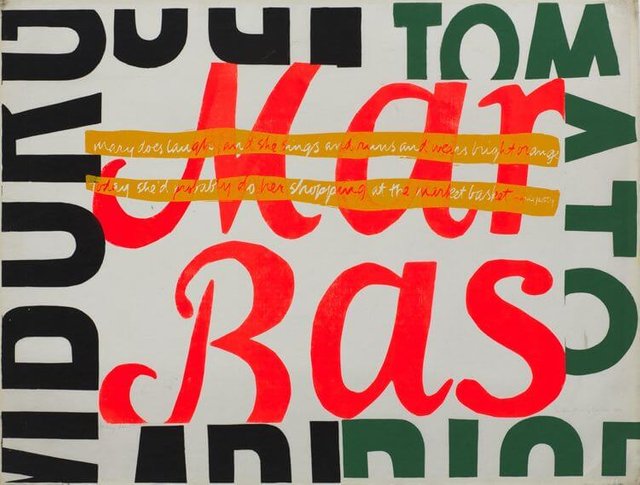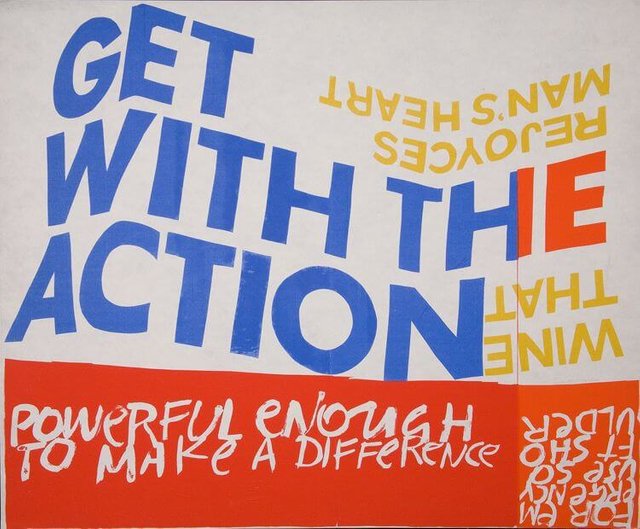Artistic space #120 - Human rights, rebelliousness and silk-screen printing, the life of Sister Corita Kent
Human rights, rebelliousness and silk-screen printing, the life of Sister Corita Kent
Today in the women's special that marked the Pop art, the life and work more awaited. Belonging to a religious system can sometimes mean maintaining a behavior a little apart from that of an ordinary person, but in the case of the artist who introduces you broke several social paradigms, I'm talking about Sister Corita Kent an American nun who became one of the strongest contestant artists of the 60s. Come with me to learn some of the most important aspects of her life and work.
Corita Kent was born in Los Angeles, California in 1918. Her family instilled in her the Catholic doctrine since she was a little girl, she felt sure that she was immersed in the religion that had enough influence in Corita Kent's personal life to decide to become a Catholic nun at the age of 18. She was as obedient as all the women who consecrate their lives to Christ, but she would soon be affected by the warlike position of her country.

So in the 1950s she became an anti-war, anti-racist and anti-human rights activist, and began to deepen her ideas through a trade she had already learned in the convent where she lived. Silk-screen printing would be the weapon to protest against all inequalities and against the Vietnam War.

That rebellious character of a nun was precisely what inspired followers of the ideas of the time who helped in their work of bringing peace through their silkscreen art. She spent nearly 30 years in the Catholic school under the Franciscan order called Sisters of the Immaculate Heart. And it was in that same convent where he became interested in art by learning all about techniques and art history.

Already at that time the nun was dedicated to making silkscreen designs with Catholic messages where a style similar to pop art prevailed since Kent was an admirer of Andy Warhol, those bright tones would soon become more striking tones with messages full of rebellion clamoring for justice for human rights of Aboriginal communities and Afro-descendants, at age 40 is when he unleashes as a prominent artist of silkscreen with clear messages full of conscience on the political issue of war and Catholic religion.

Not only was Fan of Warhol but also managed to do work in the same years and because of the messages and techniques managed to get the same attention that Warhol even shared many times becoming good friends. Although marketing has made the image in the nun's story a bit opaque, Andy Warhol has become better known in mass culture.
Among its artistic facets, we have that it began doing silkscreen with Catholic religious motives, then it happened to realize designs where it incorporated for the first time political messages which were very criticized by its brotherhood.

And already in her most adult and matured stage of art she began to be more political and less religious, going through styles that go from the figurative, abstract up to only making typographies.
Conflicts over her political stance and activism in favor of human rights led her to definitively leave the vows of chastity because of countless disputes and fears on the part of many priests and nuns of her brotherhood.

For its final stage of life I dedicate it to fight for the human rights and for some racial violations, it is even counted as the most important acts against the assassination of Martin Luther King Jr the greatest also those that went against the Vietnam War.
She died in 1986 after being diagnosed with cancer a year earlier.

If you want to know more about the artist I suggest the following links
Corita website
Biography
Thank you for reading


If you liked reading this article, feel free to FOLLOW ME, UPVOTE and RESTEEM! It's always appreciated =D. Thank you all for your support and see you soon for the news flamingirl's adventures!

